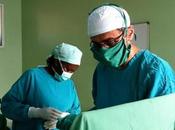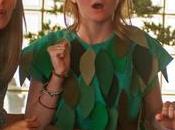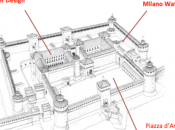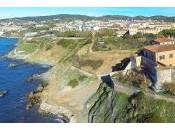 Così raccontava Paolo Borsellino i momenti immediatamente precedenti al trasferimento sull’isola dove i due magistrati avrebbero poi lavorato per scrivere l’istruttoria del primo maxi-processo a Cosa Nostra.
Così raccontava Paolo Borsellino i momenti immediatamente precedenti al trasferimento sull’isola dove i due magistrati avrebbero poi lavorato per scrivere l’istruttoria del primo maxi-processo a Cosa Nostra.La mafia aveva appena ucciso il commissario Beppe Montana, dirigente della sezione catturandi della squadra mobile di Palermo,e il dirigente della squadra mobile, Ninni Cassarà. Un’altra estate di sangue per il capoluogo siciliano quella del 1985. Ed è proprio in quell’estate che Falcone e Borsellino gettano le fondamenta per il procedimento che portò alla sbarra, tutte insieme per la prima volta nella storia, più di 400 persone organiche alle “famiglie” della mafia siciliana. Così come i due giudici anche gli altri componenti del pool hanno assaggiato la vita dei reclusi.
«Siamo stati buttati all'Asinara - ricordava ancora Borsellino in una intervista - a lavorare per un mese e alla fine ci hanno anche presentato il conto: ho conservato la ricevuta. Pagammo - noi e i familiari - diecimila lire al giorno per la foresteria e in più i pasti. I magistrati fuori sede hanno diritto alla missione. Ma quella era una missione particolare. Avremmo dovuto chiedere il rimborso. Non lo facemmo, avevamo cose più importanti da fare». Avevano altro da fare, e il solo Borsellino aveva 800 fascicoli da amministrare.
Gli imputati del “maxi” in tutto sono 474. 119 di loro però, che costituiscono il cuore pulsante e il futuro di Cosa Nostra non sono assicurati alla giustizia: quasi tutti i ‘vincenti’ dell’organizzazione compaiono tra i contumaci. Tra di loro Totò Riina, Bernardo Provenzano, e i Madonia, che hanno potuto sfruttare anche i buoni uffici dell’eurodeputato della DC Salvo Lima.
Tra gli imputati eccellenti figurano invece Luciano Leggio, Pippo Calò e Michele Greco. Il 10 febbraio del 1986 inizia il processo che attira giornali e tv di tutto il mondo dentro l’aula Bunker del carcere dell’Ucciardone a Palermo. Sfilerà in aula anche quel Tommaso Buscetta che proprio a Falcone iniziò a svelare i meccanismi di Cosa Nostra.
Nell’aula dell’Ucciardone va in scena un mondo allora ancora semisconosciuto e non del tutto compreso nemmeno agli addetti ai lavori. Un mondo che si mostra anche all’interno delle gabbie dove stazionano i detenuti, che fra lo scherno e la sacralità dei riti mafiosi mostrano la loro sicurezza dell’impunità come era stato fino a quel momento. Fuori dall'aula però le famiglie non si fermano e sulla scena impazzano sempre i Riina, i Provenzano, i Madonia il tavolino costituito dal 'ministro dei lavori pubblici' di Cosa Nostra Angelo Siino, che farà poi capolino durante Mani Pulite.
Qualcosa però era cambiato con i processo dell'Ucciardone, e il lavoro del pool ne era la conferma: il maxi processo, che pure tanti puristi del diritto osteggiarono, si chiude con 360 condanne in primo grado. Ma quel gigante giudiziario non ha vita facile, infatti al termine dei tre gradi di giudizio, nel 1989, ultimo dei quali sotto la mannaia del giudice di Cassazione Corrado Carnevale detto “l’ammazzasentenze”, solo sessanta imputati restavano in carcere per le accuse del maxi-processo.
Serve un ricorso della procura generale per confermare le condanne di primo e secondo grado del maxi-processo e ribaltare il verdetto di Carnevale che poi verrà inquisito e assolto per le presunte collusioni con ambienti mafiosi. Avrebbe dovuto condurre il ricorso presso la cassazione l’alto magistrato calabrese Antonino Scopelliti, ma il 9 agosto del 1991 a campo calabro viene ucciso dagli uomini della ‘ndrangheta. Un omicidio rimasto senza colpevoli, ma che segnerebbe una sorta di patto tra mafia siciliana e ‘ndrangheta per l’eliminazione del giudice. Un successo a metà quello del maxi-processo, che fece però scattare nuovi metodi d'indagine e una nuova consapevolezza del fenomeno mafioso anche in seno all'opinione pubblica.
Quando la Cassazione pronuncia il verdetto finale sul maxi-processo è il 30 gennaio 1992. L’anno che cambiò per sempre la storia d’Italia e degli italiani [to be continued...]
Luca Rinaldi | @lucarinaldi
Mafia and the maxi trial to Cosa Nostra
"The news that the mafia was plotting something against us and our families came from the special team of carcerary agents who were collecting rumors from the cells. We were taken, me, Giovanni, his wife Francesca, my wife and my three kids and in 48 hours taken to Asinara: with an airplain to Alghero, then Porto Torres by land and finally to the island with the agent's boat". This is what Paolo Borsellino said in the moments right after being transferred on the island where the two judges would work at the first maxi trial against Cosa Nostra.
The mafia had just killed the commissary Beppe Montana, director of the catturandi section of the Palermo team, and the director of the mobile team Ninni Cassarà. Another summer of blood for the Sicilian city, the one of 1985. And it was during that same summer that Falcone and Borsellino set the foundation for the trial that brought into court, all together for the first time in history, more than 400 organic people to the "families" of the Sicilian mafia. As the two judges, other components of the pool have tasted the life as locked down.
"We were thrown on the Asinara - Borsellino remembered in an interview - to work for a month and in the end they gave us the bill: I still have the receipt. We paid - us and our families - 10.000 lire a day for lodging and meals. The judges who aren't on site have the right to the mission. But that was a particular mission. We should have asked for a compensation. We didn't, we had much more important things to do". They had other things to do, and Borsellino alone had 800 practices to administrate.
The defendants of the maxitrial were 474. 119 of them, however, who constitute the beating heart and the future of Cosa Nostra, couldn't be aprehended: almost all the "winners" of the organization appear among the contumacious. Among them Totò Riina, Bernardo Provenzano and the Madonia, who were able to exploit the good services of the DC eurodeputee Salvo Lima.
Among the famous defendants there were Luciano Leggio, Pippo Calò and Michele Greco. On the 10th of February 1986 the trial begins: it attracted newspapers and televisions from all over the world in the Bunker court of the Ucciardone prison in Palermo. In that same court Tommaso Buscetta will appear, the one who started to unveil Cosa Nostra's mechanisms to Falcone.
In the Ucciardone court a show starts that was still unknown and not understood even by those who worked in the area. A world that is shown even inside the cages where the defendants are, between mockery and the sacrality of mafia rituals show the safety of the impunity as it had been until that moment. Outside the courtroom the families don't stop and on the scene the Riina, the Provenzano, the Madonia hold the stage, the set organized by the "minister of public works" of Cosa Nostra, Angelo Siina, who will emerge during Clean Hands.
Something however was changed with the Ucciardone trial, and the work of the pool was a confirmation of that: the maxi trial, that many purists of the law were against of, was closed with 360 first degree verdicts. But that judiciary giant doesn't have an eaasy life, so at the end of the 3 degrees of trial, in 1989, the last of which under the cleaver of Cassazione judge Corrado Carnevale (nicknamed the "verdict killer"), only 60 defendants remained in jail for the accusations of the maxi trial.
There was a recourse of the general attorney to confirm the first and second degree verdicts of the maxi trial and change Carnevale's verdict, who will then be processed and absolved for supposed collusions with the mafia environments. The recourse eshould have been conducted by the high judge Antonino Scopelliti, but on the 9th of August 1991 at Campo Calabro he was killed by the 'ndrangheta men. A homicide remained without responsibles, but which signed a sort of pact between the Sicilian and Calabrian mafias for the elimination of the judge. A half success, the one of the maxi trial, which invented new ways of making inquiries and a new awareness of the mafia phenomenon in the public opinion.
When the Cassazione prononunces the final verdict on the maxi trial, it is the 30th of January 1992. The year that changed forever the history of Italy and of Italian people.
Luca Rinaldi | @lucarinaldi







